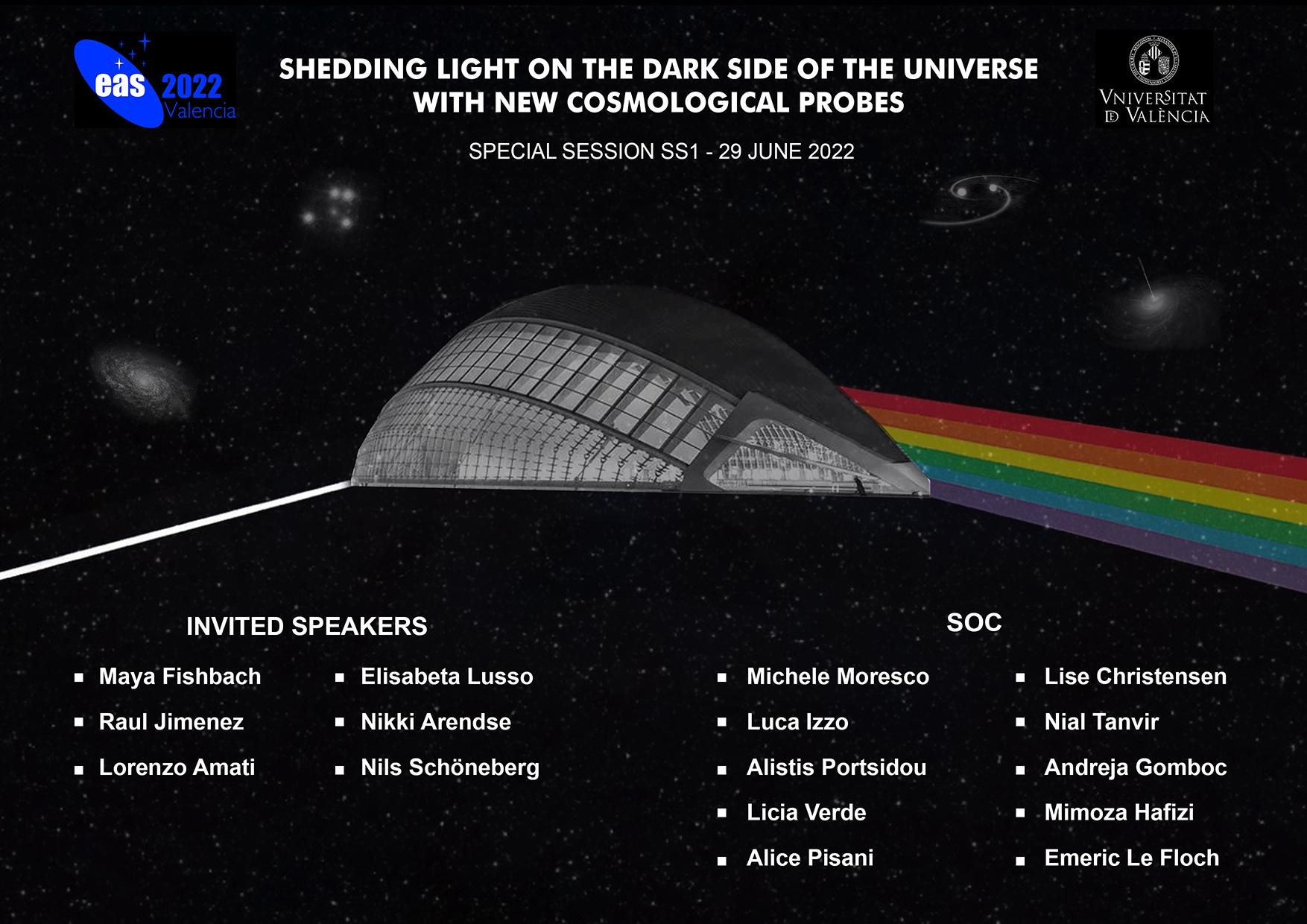Special Session SS1
29 June 2022
Shedding light on the dark side of the Universe with new cosmological probes

Aims and scope
Despite the huge progress in the last decades, modern cosmology is still affected by major issues, the most relevant including the origin of the accelerated expansion of the Universe and the tension on the value of the Hubble constant. The investigation of the former deals with fundamental questions related to the existence and properties of a mysterious ?dark energy? or the need for extending the field equation of general relativity. On the other hand, while it can be ascribed to some hidden systematics in the calibrating sources, there is the intriguing possibility that H0 dichotomy may reveal new exotic physics. Both these big questions are mostly based on the results from (i) the Cosmic Microwave Background through the analysis of the Planck mission, and (ii) the use of type-Ia supernovae as distance indicators. Complementary to these two leading channels, there are several astrophysical sources that can be used as standardizable candles, thanks to the use of luminosity correlations, or to some specific observable that does not depend directly on the underlying cosmology. The first results using these innovative non-standard probes to constrain the underlying cosmological model are promising but the accuracy level on the main cosmological parameters is still far to be comparable with type-Ia SNe and/or the CMB.
However, every insight gained so far represents an attempt to shed light on new missing pieces of the puzzle that is our Universe: How can non-standard probes illuminate the high-redshift Universe? Can nearby non-standard probes play a role in the Hubble tension problem? What is the role of systematics and selection effects, and how can we quantify them? And, last but not the least, what are the best astrophysical sources to be used as new cosmological probes?
Now is the perfect time to bring together experts on different non-standard cosmological probes to present new results to the community, discuss synergies with related fields, and also coordinate plans for the near future. We aim to bring together a number of established leaders in each different field together with young researchers. Special emphasis will be given to PhD students and early-career post-Docs who will guarantee that non-standard cosmological probes will continue to flourish in the era of incoming large projects like SKA (radio), EUCLID (IR), the Rubin LSST (optical), and the advanced LIGO-Virgo-KAGRA detector, and in the long-term perspective the Einstein telescope (GWs). Discussing new ideas, methods, and synergies with other fields leading to new possible probes will be an important result of this meeting.
Contributions not selected for an oral presentation will have a chance to be presented as posters.
Programme
- High-redshift probes (QSO, GRB, cosmic chronometers)
- Time-delay cosmography & lensing
- Standard sirens
- Additional probes (voids, line intensity mapping, redshift drift, surface brightness fluctuations, stellar ages, FRBs, SLSNe)
- Challenging exotic models
Invited speakers
- Maya Fishbach Northwestern University (US)
- Raul Jimenez University of Barcelona (ES)
- Lorenzo Amati INAF Bologna (IT)
- Elisabeta Lusso University of Florence (IT)
- Nikki Arendse Stockholm University (SE)
- Nils Schöneberg Aachen University (DE)
Scientific organisers
- Michele Moresco (chair) University of Bologna (IT)
- Luca Izzo (co-chair) DARK/NBI (DK)
- Alistis Portsidou University of Edinburgh (UK)
- Licia Verde University of Barcelona (ES)
- Alice Pisani Princeton University (US)
- Lise Christensen Univ. Copenaghen (DK)
- Nial Tanvir Univ. Leicester (UK)
- Andreja Gomboc Univ. Nova Gorica (SL)
- Mimoza Hafizi Univ. Tirana (AL)
- Emeric Le Floch CEA Saclay (FR)
Contact
Michele Moresco: Michele.moresco @ unibo.it
Luca Izzo: luca.izzo @ nbi.ku.dk
Updated on Mon Mar 07 10:30:47 CET 2022
|

 A power cut will shut down all EAS services on Tuesday, 10 January 2017 starting at 7:30 CET.
A power cut will shut down all EAS services on Tuesday, 10 January 2017 starting at 7:30 CET.


